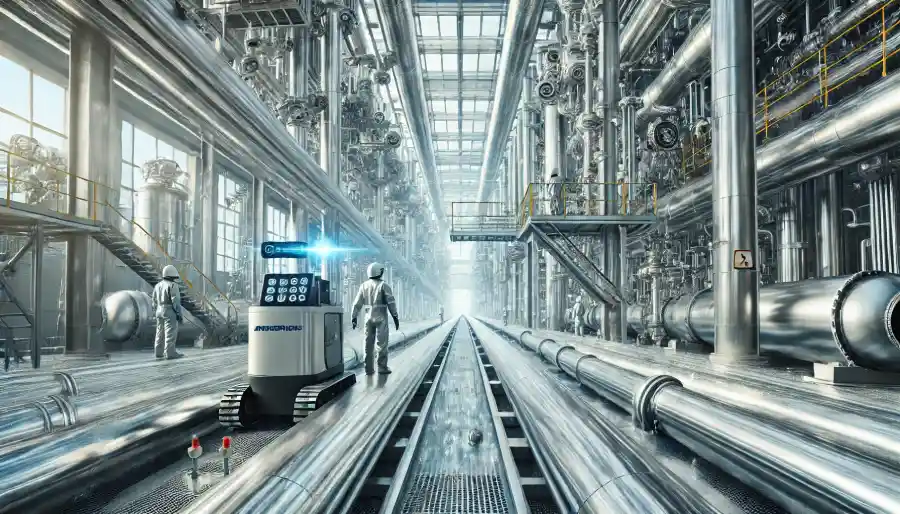A Safer and More Efficient System: The Benefits of Proper Pipeline Cleaning
Intro to Pipeline Cleaning
Pipelines are critical infrastructure for transporting various fluids, including oil, gas, and water. Over time, these pipelines can accumulate debris, scale, and other deposits that reduce efficiency and lead to corrosion or leaks. This is where pipeline cleaning becomes vital. Maintaining optimal efficiency and ensuring the lifespan of the pipes requires routine cleaning. One standard method used in the industry is pipeline pigging, which involves sending devices known as pigs through the pipeline to clean and inspect it. These pigs can vary in design and function, catering to different cleaning needs and pipeline conditions, making them a vital instrument for pipeline upkeep.
Industries can prevent expensive repairs and potential environmental hazards by understanding the importance and methodology of pipeline cleaning. It’s not just about maintaining flow; it’s also about protecting investments and ensuring safety standards are met. A well-maintained pipeline network supports uninterrupted operations, enhancing the enterprise’s overall performance and efficiency.
Why Regular Cleaning is Essential
Regular pipeline cleaning is fundamental for preventing blockages and mitigating risks associated with the buildup of wax, hydrocarbon, and other contaminants. According to U.S. Energy Information Administration (EIA), maintaining pipeline integrity is crucial for safety and operational efficiency. Accumulated debris can lead to significant pressure drops, reducing the efficiency of fluid transport and eventually causing operational disruptions.
Furthermore, improperly cleaned pipelines are more prone to corrosion and leakage, which can have severe environmental impacts and result in costly cleanup efforts. Regular maintenance ensures that the pipelines operate under optimal conditions, thus enhancing their lifespan and reliability. In addition, routine Cleaning and inspection can help with the early identification of any issues, enabling quick treatments and solutions before they get worse.
Standard Techniques Used in Pipeline Cleaning
- Mechanical Cleaning involves physically removing deposits from the pipeline interior using tools such as pigs. Mechanical pigs are especially useful for clearing hard deposits and obstructions, making them a popular choice in the industry.
- Chemical Cleaning: Utilizes chemical solutions to dissolve deposits and contaminants. This method effectively removes deposits resistant to mechanical Cleaning, such as certain scale types and organic buildup.
- Hydrodynamic Cleaning employs high-pressure water jets to dislodge and remove debris. This technique is suitable for removing soft deposits and loose debris without damaging the pipeline.
Each cleaning method has unique benefits and is chosen based on specific requirements and the pipeline’s condition. Mechanical pigs, for example, can be designed with various features such as brushes, scrapers, or even magnets to enhance their cleaning effectiveness. Chemical cleaning, on the other hand, often involves the careful selection of chemical agents to target specific types of deposits while minimizing environmental impact. Hydrodynamic cleaning is valued for its ability to clean without introducing foreign substances into the pipeline.
Choosing the Right Cleaning Method
Choosing the proper cleaning technique depends on several variables, such as the fluid conveyed, the pipeline’s composition, and the deposits present. Expert advice can help you decide which action suits your particular requirements. For example, pipelines transporting crude oil are often more vulnerable to wax buildup, necessitating mechanical or chemical pipes designed to address this issue.
In addition, the size and configuration of the pipeline play a significant role in determining the cleaning method. Some pipelines may have bends, valves, and other features that require specialized pigs or cleaning techniques. By thoroughly evaluating these factors, businesses can ensure that their cleaning procedures are effective and cost-efficient, lowering the possibility of damage and enhancing pipeline efficiency overall.
Safety Measures and Precautions
Safety is paramount during pipeline cleaning. To ensure the safety of workers and the environment, it is crucial to follow guidelines. Proper gear and monitoring systems should be in place to handle potential hazards. Safety protocols must be strictly followed, including using personal protective equipment (PPE) and continuously monitoring pipeline conditions.
Moreover, conducting thorough risk assessments before initiating the cleaning process is essential. When possible risks are recognized, such as poisonous gas leaks or high-pressure discharges, the necessary precautions are implemented. Creating and practicing emergency response plans is critical to equipping employees for unexpected events. By putting safety first, businesses may reduce risks, safeguard employees, and preserve pipeline integrity.
Environmental Considerations
Environmental sustainability is an essential aspect of pipeline cleaning. Methods that minimize ecological impact, such as using biodegradable chemicals or advanced mechanical techniques, are gaining popularity. Monitoring environmental impact assessments ensures compliance with environmental regulations. Companies must adopt eco-friendly practices to reduce their carbon footprint and protect natural resources.
For instance, using environmentally friendly cleaning agents can prevent harmful chemicals from entering the ecosystem. Additionally, adopting innovative technologies, such as robotic cleaning tools, can lessen the chance of environmental contamination and the necessity for manual intervention. By integrating sustainable practices into their operations, businesses can contribute to environmental conservation while maintaining high standards of pipeline cleanliness.

